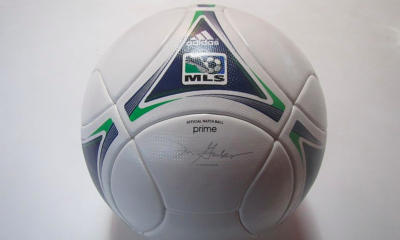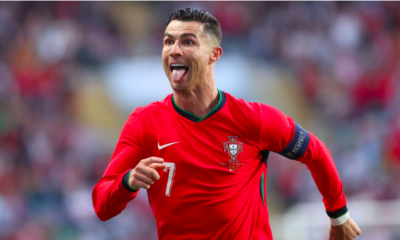Sports
Tips for Understanding Sports Industry Trends

Tips for Understanding Sports Industry Trends
The sports industry is a dynamic and ever-evolving field, influenced by various factors such as technological advancements, changing consumer preferences, and global events. Understanding these trends is crucial for stakeholders, including athletes, coaches, sports managers, and investors.
In this comprehensive guide, we delve into tips for understanding sports industry trends, providing insights and strategies to stay ahead in this competitive landscape.
The Importance of Understanding Sports Industry Trends
Why Keeping Up with Trends is Crucial
Staying updated with sports industry trends is vital for several reasons:
- Competitive Edge: Knowing the latest trends helps stakeholders make informed decisions, giving them a competitive advantage.
- Adaptation: Trends indicate the direction in which the industry is moving, allowing businesses and individuals to adapt accordingly.
- Innovation: Trends often highlight new technologies and methodologies that can lead to innovation and improvement in performance and operations.
Analyzing Market Data
Leveraging Big Data in Sports
Big Data has revolutionized the sports industry, providing valuable insights into performance, fan engagement, and market trends. Here’s how to leverage big data effectively:
- Performance Analysis: Use data analytics to track and improve athlete performance.
- Fan Engagement: Analyze fan behavior and preferences to enhance engagement strategies.
- Market Trends: Monitor market data to identify emerging trends and opportunities.
Technological Advancements
Impact of Technology on Sports
Technological advancements are reshaping the sports industry in numerous ways:
- Wearable Technology: Devices that monitor health and performance metrics are becoming increasingly popular among athletes.
- Virtual Reality (VR): VR is being used for training, fan experiences, and even broadcasting.
- Artificial Intelligence (AI): AI helps in performance analysis, injury prediction, and fan engagement.
Wearable Technology
Wearable technology has become a game-changer in sports. Devices such as smartwatches, fitness trackers, and heart rate monitors provide real-time data on various performance metrics. This information helps athletes optimize their training, prevent injuries, and enhance overall performance.
Virtual Reality in Sports
Virtual Reality (VR) is transforming how athletes train and how fans experience sports. Athletes use VR to simulate game scenarios and improve their skills in a controlled environment. For fans, VR offers immersive experiences, allowing them to feel as if they are part of the action.
Artificial Intelligence and Machine Learning
Artificial Intelligence (AI) and Machine Learning (ML) are being used to analyze vast amounts of data to identify patterns and predict outcomes. This technology is used in performance analysis, game strategy development, and even in predicting injuries.
Consumer Preferences
Changing Preferences of Sports Fans
Understanding the evolving preferences of sports fans is crucial for maintaining engagement and loyalty. Some key trends include:
- Digital Consumption: Fans are increasingly consuming sports content through digital platforms.
- Interactive Content: Fans prefer interactive and engaging content, such as live streams with real-time commentary.
- Personalization: Tailored content that caters to individual preferences is becoming more popular.
Digital Consumption of Sports
The way fans consume sports has shifted significantly towards digital platforms. Social media, streaming services, and sports apps are now the primary sources of sports content for many fans. This shift requires sports organizations to adapt their content delivery strategies to meet the demands of a digital-savvy audience.
Interactive and Engaging Content
Fans are no longer passive viewers; they seek interactive and engaging content. Live streams with real-time commentary, interactive polls, and behind-the-scenes footage are some of the ways to engage fans effectively. Creating content that encourages fan participation enhances the overall experience and builds loyalty.
Personalized Fan Experiences
Personalization is key to engaging modern sports fans. By leveraging data analytics, sports organizations can create tailored content that caters to individual preferences. This approach not only enhances fan satisfaction but also increases the likelihood of repeat engagement.
Globalization of Sports
The Growing International Appeal of Sports
Sports have become a global phenomenon, with events like the Olympics and the FIFA World Cup drawing massive international audiences. Understanding the implications of this globalization is essential for stakeholders.
- Market Expansion: Globalization opens up new markets and revenue streams.
- Cultural Exchange: It fosters cultural exchange and broadens the appeal of sports.
- Talent Pool: Access to a larger talent pool enhances competition and performance.
Market Expansion Opportunities
Globalization presents numerous opportunities for market expansion. By reaching international audiences, sports organizations can tap into new revenue streams, such as broadcasting rights, merchandise sales, and sponsorship deals. Expanding into emerging markets also helps diversify the fan base and reduce dependence on domestic markets.
Cultural Exchange and Broadening Appeal
Globalization fosters cultural exchange and broadens the appeal of sports. International events like the Olympics and the FIFA World Cup bring together athletes and fans from diverse backgrounds, promoting understanding and appreciation of different cultures. This cultural exchange enhances the global appeal of sports and attracts new fans.
Access to a Larger Talent Pool
The globalization of sports provides access to a larger talent pool, enhancing competition and performance. Athletes from different countries bring unique skills and perspectives, enriching the overall quality of sports. This diversity also inspires innovation and drives the development of new training methodologies.
Sustainability in Sports
The Importance of Sustainability
Sustainability has become a critical focus in the sports industry. From eco-friendly stadiums to sustainable practices in event management, there is a growing emphasis on minimizing the environmental impact of sports activities.
- Eco-Friendly Stadiums: Designing and building stadiums with sustainable materials and energy-efficient systems.
- Sustainable Event Management: Implementing practices that reduce waste and promote recycling during sports events.
- Corporate Social Responsibility (CSR): Encouraging sports organizations to adopt CSR initiatives that benefit the environment and communities.
Eco-Friendly Stadiums
Eco-friendly stadiums are designed and built with sustainability in mind. These stadiums use sustainable materials, energy-efficient systems, and renewable energy sources to minimize their environmental impact. Examples include solar panels, rainwater harvesting systems, and waste recycling programs.
Sustainable Event Management
Sustainable event management involves implementing practices that reduce waste and promote recycling during sports events. This includes using biodegradable products, reducing single-use plastics, and encouraging fans to participate in recycling programs. These practices help minimize the environmental footprint of sports events.
Corporate Social Responsibility in Sports
Corporate Social Responsibility (CSR) initiatives in sports focus on benefiting the environment and communities. Sports organizations can adopt CSR initiatives such as promoting environmental awareness, supporting local communities, and partnering with environmental organizations. These initiatives not only enhance the organization’s reputation but also contribute to sustainable development.
Economic Impact of Sports
How Sports Contribute to the Economy
The sports industry has a significant economic impact, contributing to job creation, tourism, and infrastructure development.
- Job Creation: Sports events and organizations create numerous job opportunities, from athletes and coaches to support staff and event managers.
- Tourism: Major sports events attract tourists, boosting local economies and businesses.
- Infrastructure Development: Hosting sports events often leads to the development of infrastructure, such as stadiums, roads, and hotels.
Job Creation in the Sports Industry
The sports industry creates numerous job opportunities across various sectors. Athletes, coaches, support staff, event managers, and sports marketers are just a few of the roles available. This job creation has a positive impact on the economy, providing employment and income for many individuals.
Boosting Tourism Through Sports
Major sports events attract tourists from around the world, boosting local economies and businesses. Hotels, restaurants, and shops benefit from the influx of visitors, while the local community gains from increased spending. This boost in tourism also creates additional job opportunities in the hospitality and service industries.
Infrastructure Development
Hosting sports events often leads to the development of infrastructure, such as stadiums, roads, and hotels. These developments not only enhance the local community but also create a lasting legacy that benefits future generations. Improved infrastructure also makes the region more attractive for future events and investments.
Legal and Ethical Considerations
Navigating Legal and Ethical Issues in Sports
The sports industry faces numerous legal and ethical challenges, including doping, match-fixing, and athlete rights.
- Doping: Ensuring athletes compete fairly and without the use of performance-enhancing drugs.
- Match-Fixing: Preventing manipulation of game outcomes for financial gain.
- Athlete Rights: Protecting the rights and well-being of athletes, including fair contracts and working conditions.
Combating Doping in Sports
Doping remains a significant challenge in sports. Ensuring athletes compete fairly and without the use of performance-enhancing drugs is crucial for maintaining the integrity of sports. Anti-doping agencies conduct regular testing and enforce strict penalties for violations to combat this issue.
Preventing Match-Fixing
Match-fixing involves manipulating game outcomes for financial gain. Preventing match-fixing is essential for maintaining the integrity of sports. This requires robust monitoring systems, strict regulations, and severe penalties for those involved in match-fixing activities.
Protecting Athlete Rights
Protecting the rights and well-being of athletes is a critical concern in the sports industry. This includes ensuring fair contracts, providing safe working conditions, and supporting athletes’ mental and physical health. Organizations must prioritize athlete welfare to foster a positive and ethical sports environment.
Conclusion
Understanding sports industry trends is essential for staying competitive and making informed decisions. By leveraging big data, embracing technological advancements, and adapting to changing consumer preferences, stakeholders can navigate the evolving landscape successfully.
Additionally, considering the impact of globalization, sustainability, economic contributions, and legal and ethical issues will ensure a comprehensive approach to understanding and capitalizing on sports industry trends.
Frequently Asked Questions (FAQs)
How can big data help in understanding sports industry trends?
Big data provides valuable insights by analyzing vast amounts of information related to athlete performance, fan engagement, and market dynamics. By leveraging big data, stakeholders can:
- Track and improve athlete performance through detailed performance metrics.
- Enhance fan engagement by understanding fan behavior and preferences.
- Identify emerging market trends and opportunities for growth.
What are the key technological advancements influencing the sports industry?
Several technological advancements are reshaping the sports industry:
- Wearable Technology: Devices that monitor health and performance metrics.
- Virtual Reality (VR): Used for training, fan experiences, and broadcasting.
- Artificial Intelligence (AI): Helps in performance analysis, injury prediction, and fan engagement.
How is globalization affecting the sports industry?
Globalization has several significant impacts on the sports industry:
- Market Expansion: Opens up new markets and revenue streams.
- Cultural Exchange: Fosters cultural exchange and broadens the appeal of sports.
- Larger Talent Pool: Access to a broader talent pool enhances competition and performance.
Why is sustainability important in sports, and how is it being implemented?
Sustainability is crucial for minimizing the environmental impact of sports activities. Implementation includes:
- Eco-Friendly Stadiums: Using sustainable materials and energy-efficient systems.
- Sustainable Event Management: Practices that reduce waste and promote recycling.
- Corporate Social Responsibility (CSR): Initiatives that benefit the environment and communities.
What legal and ethical issues are prevalent in the sports industry?
The sports industry faces several legal and ethical challenges:
- Doping: Ensuring fair competition without performance-enhancing drugs.
- Match-Fixing: Preventing the manipulation of game outcomes for financial gain.
- Athlete Rights: Protecting the rights and well-being of athletes, including fair contracts and working conditions.
Sports
The NHL Conn Smythe Trophy: Celebrating Playoff MVPs in Ice Hockey

The NHL Conn Smythe Trophy: Celebrating Playoff MVPs in Ice Hockey
The NHL Conn Smythe Trophy is one of the most prestigious awards in ice hockey, given annually to the player judged to be the most valuable to their team during the NHL playoffs. Named after the former owner, general manager, and coach of the Toronto Maple Leafs, Conn Smythe, this award symbolizes excellence and clutch performance when it matters the most. Let’s dive into the rich history, notable winners, and the impact of the Conn Smythe Trophy on the sport of hockey.
The History and Origins of the Conn Smythe Trophy
Inception of the Trophy
The Conn Smythe Trophy was introduced in 1965, designed to honor the most valuable player (MVP) in the Stanley Cup playoffs. Unlike other awards that consider regular-season performance, the Conn Smythe focuses solely on playoff contributions.
Significance of Conn Smythe
Conn Smythe was a towering figure in the world of hockey. As the driving force behind the Toronto Maple Leafs, his legacy is remembered through this trophy. Smythe’s influence on the game, from his strategic innovations to his leadership, makes this award a fitting tribute to his contributions.
Criteria for Awarding the Conn Smythe Trophy
Playoff Performance
The primary criterion for the Conn Smythe Trophy is the player’s performance during the playoffs. This includes scoring, defensive play, leadership, and overall impact on the game.
Voting Process
Members of the Professional Hockey Writers’ Association (PHWA) vote to determine the winner of the Conn Smythe Trophy. Voting takes place immediately after the final game of the Stanley Cup Finals, ensuring that the entire playoff performance is considered.
Notable Conn Smythe Trophy Winners

Bobby Orr: A Legend in Defense
Bobby Orr, the legendary defenseman, was the first player to win the Conn Smythe Trophy twice. His remarkable skill and leadership helped the Boston Bruins secure Stanley Cup victories in 1970 and 1972.
Patrick Roy: Master of the Crease
Patrick Roy stands out as the only player to win the Conn Smythe Trophy three times, each with a different team. His goaltending prowess and ability to perform under pressure make him a true icon in hockey history.
Sidney Crosby: Modern-Day Maestro
Sidney Crosby, with two Conn Smythe Trophies to his name, exemplifies the blend of skill, determination, and leadership that defines a playoff MVP. His contributions to the Pittsburgh Penguins’ success have solidified his place among the greats.
Impact of the Conn Smythe Trophy on Players’ Careers
Elevating Status and Legacy
Winning the Conn Smythe Trophy elevates a player’s status within the league and cements their legacy. It is a testament to their ability to perform when it matters most and often leads to greater recognition and endorsement opportunities.
Team Dynamics
The Conn Smythe Trophy highlights the importance of individual contributions to team success. Players who win this award are often seen as leaders and pivotal figures within their teams, influencing team dynamics and future strategies.
Memorable Moments in Conn Smythe Trophy History
Jean-Sébastien Giguère’s Heroics
In 2003, Jean-Sébastien Giguère became the fifth player to win the Conn Smythe Trophy despite his team, the Anaheim Ducks, losing in the Finals. His outstanding goaltending throughout the playoffs left an indelible mark on the hockey world.
Jonathan Toews’ Leadership
Jonathan Toews’ Conn Smythe win in 2010 showcased his leadership and clutch performances. His ability to elevate his game during critical moments was instrumental in the Chicago Blackhawks’ Stanley Cup victory.
Comparing the Conn Smythe Trophy with Other NHL Awards
Hart Memorial Trophy vs. Conn Smythe Trophy
While the Hart Memorial Trophy is awarded to the regular season’s most valuable player, the Conn Smythe Trophy focuses exclusively on playoff performance. This distinction highlights the unique value of excelling under playoff pressure.
Ted Lindsay Award vs. Conn Smythe Trophy
The Ted Lindsay Award, voted on by the players, recognizes the most outstanding player in the regular season. In contrast, the Conn Smythe Trophy is determined by the media and focuses on the playoffs, offering different perspectives on player excellence.
The Legacy and Future of the Conn Smythe Trophy
Evolving Game Dynamics
As the NHL evolves, so do the attributes valued in Conn Smythe winners. The increasing speed and skill in the game mean that future winners will likely showcase a diverse range of talents, from scoring to defensive acumen.
Rising Stars
Emerging talents like Connor McDavid and Nathan MacKinnon are poised to leave their mark on the playoffs. Their potential to win the Conn Smythe Trophy reflects the ongoing evolution of hockey and the rise of new superstars.
Conclusion
The NHL Conn Smythe Trophy is more than just an award; it is a symbol of playoff excellence and a testament to the players who rise to the occasion when it matters most. From its inception to its notable winners, the Conn Smythe Trophy captures the essence of what it means to be the most valuable player in the most crucial moments of the game. As we look to the future, this prestigious award will continue to celebrate the best in hockey, honoring those who make the greatest impact in the playoffs.
Frequently Asked Questions (FAQs)
Who was the first winner of the Conn Smythe Trophy?
The first winner of the Conn Smythe Trophy was Jean Béliveau of the Montreal Canadiens in 1965.
How many times has Patrick Roy won the Conn Smythe Trophy?
Patrick Roy has won the Conn Smythe Trophy three times, the most by any player, in 1986, 1993, and 2001.
Can a player from the losing team win the Conn Smythe Trophy?
Yes, players from the losing team can win the Conn Smythe Trophy. Notable examples include Jean-Sébastien Giguère in 2003 and Roger Crozier in 1966.
How is the winner of the Conn Smythe Trophy chosen?
The winner of the Conn Smythe Trophy is chosen by a vote from the Professional Hockey Writers’ Association members after the conclusion of the Stanley Cup Finals.
Has a rookie ever won the Conn Smythe Trophy?
Yes, Patrick Roy won the Conn Smythe Trophy as a rookie in 1986, leading the Montreal Canadiens to a Stanley Cup victory with his stellar goaltending.
Sports
The NHL Hart Memorial Trophy: A Deep Dive into Hockey’s Most Prestigious Award

The NHL Hart Memorial Trophy: A Deep Dive into Hockey’s Most Prestigious Award
The NHL Hart Memorial Trophy stands as a testament to excellence in ice hockey, awarded annually to the player judged to be the most valuable to his team. This accolade, named after Dr. David Hart, has a storied history and significant impact on the sport. Let’s explore the origins, criteria, notable winners, and the profound legacy of the Hart Trophy.
The Origins of the Hart Memorial Trophy
Early Beginnings
The Hart Memorial Trophy was first awarded in 1924. Dr. David Hart, the father of Montreal Canadiens coach Cecil Hart, donated the original trophy. It was created to honor the player deemed most valuable to their team, a concept that has become integral to the NHL’s recognition of individual excellence.
Evolution Over the Decades
Initially, the award was based on votes from the NHL coaches. Over time, the voting process evolved to include members of the Professional Hockey Writers’ Association (PHWA), ensuring a broader and more diverse perspective in determining the winner.
Criteria for Winning the Hart Memorial Trophy
Judging Value
The Hart Trophy is unique because it focuses on a player’s value to their team rather than simply their statistical performance. This means the winner often comes from a team that has significantly benefited from their contributions, even if that team doesn’t necessarily top the standings.
Voting Process
The PHWA members cast their votes at the end of the regular season. Each voter selects their top five candidates, and points are awarded based on these rankings. The player with the highest total points is awarded the trophy.
Notable Hart Trophy Winners
Wayne Gretzky: The Great One
Wayne Gretzky’s name is synonymous with the Hart Trophy, having won it a record nine times during his illustrious career. His dominance in the 1980s with the Edmonton Oilers is a benchmark of individual excellence in the NHL.
Gordie Howe: Mr. Hockey
Gordie Howe, with six Hart Trophies to his name, exemplified longevity and consistency. His ability to perform at a high level across multiple decades made him a legend in the sport.
Recent Winners
Recent winners such as Connor McDavid and Leon Draisaitl have brought new excitement to the NHL, showcasing the blend of speed, skill, and strategic thinking that defines modern hockey.
Impact of the Hart Trophy on Careers
Boost in Recognition
Winning the Hart Trophy often elevates a player’s status in the league, leading to increased endorsement opportunities and a lasting legacy. It’s a recognition that cements a player’s place among the all-time greats.
Team Influence
The trophy also highlights the importance of individual contributions to a team’s success. Players who win the Hart are seen as pivotal to their team’s performance, often leading to leadership roles and increased responsibilities.
Controversies and Debates
Subjectivity of Value
Given the subjective nature of “value,” debates often arise about whether the right player was chosen. Factors like team success, statistical dominance, and overall influence can lead to differing opinions among fans and analysts.
Close Contests
There have been numerous instances where the voting was exceptionally close, leading to heated discussions about the merits of each candidate. These debates underscore the passion and engagement of the hockey community.
The Legacy of the Hart Memorial Trophy
Influence on the Game
The Hart Trophy has a profound impact on how players approach the game, knowing that their individual efforts could be recognized with such a prestigious award. It fosters a competitive spirit and drives players to excel.
Historical Significance
As the NHL continues to grow, the Hart Trophy remains a symbol of excellence and achievement. It connects the current generation of players with the legends of the past, preserving the rich history of the sport.
Memorable Hart Trophy Moments
Ovechkin’s Triple Crown
Alex Ovechkin’s third Hart Trophy in 2013 highlighted his scoring prowess and leadership, solidifying his place as one of the greatest goal scorers in NHL history.
Carey Price’s Historic Win
In 2015, Carey Price became the first goaltender to win the Hart Trophy in over a decade, showcasing the significant impact a stellar goaltending season can have on a team’s success.
Comparing the Hart Trophy with Other NHL Awards
The Art Ross Trophy
While the Art Ross Trophy is awarded to the league’s top scorer, the Hart Trophy takes a broader view, considering overall contributions and value. This distinction makes the Hart Trophy unique and highly coveted.
The Ted Lindsay Award
The Ted Lindsay Award, voted by the players, is often seen as a companion to the Hart Trophy. It provides a player’s perspective on who the most outstanding player is, offering another layer of recognition.
The Future of the Hart Memorial Trophy
Emerging Stars
As the NHL continues to evolve, new stars like Auston Matthews and Jack Hughes are emerging as potential Hart Trophy candidates. Their impact on the game ensures the future of the Hart Trophy remains bright.
Changing Dynamics
With the game becoming faster and more skilled, the criteria for winning the Hart Trophy may continue to adapt. Players who excel in multiple facets of the game will likely be at the forefront of future considerations.
Conclusion
The NHL Hart Memorial Trophy represents the pinnacle of individual achievement in hockey. Its rich history, the legends who have won it, and its impact on the game make it a cornerstone of NHL culture. As we look to the future, the Hart Trophy will undoubtedly continue to honor those who exemplify the best in hockey, celebrating the players who make the greatest impact on their teams and the sport.
Frequently Asked Questions (FAQs)
How many times has Wayne Gretzky won the Hart Trophy?
Wayne Gretzky has won the Hart Trophy a record nine times, showcasing his dominance in the NHL during his career.
Who was the first player to win the Hart Memorial Trophy?
The first recipient of the Hart Memorial Trophy was Frank Nighbor of the Ottawa Senators in 1924.
How is the Hart Trophy winner determined?
The Hart Trophy winner is determined by votes from members of the Professional Hockey Writers’ Association, who rank their top five candidates at the end of the regular season.
Has a goaltender ever won the Hart Trophy?
Yes, several goaltenders have won the Hart Trophy, including Carey Price in 2015 and Dominik Hasek, who won it twice in the 1990s.
What distinguishes the Hart Trophy from the Ted Lindsay Award?
While the Hart Trophy is awarded based on votes from sportswriters, the Ted Lindsay Award is voted on by the players themselves, recognizing the most outstanding player in the NHL from their perspective.
Sports
Ice Hockey: A Comprehensive Guide to the Fastest Game on Ice

Ice Hockey: A Comprehensive Guide to the Fastest Game on Ice
Ice hockey, a thrilling and dynamic sport, captures the hearts of millions worldwide. Known for its speed, skill, and intensity, this game is played on ice and requires players to navigate a puck into the opponent’s goal using sticks. Let’s delve deep into the world of ice hockey, exploring its history, rules, equipment, strategies, and the key elements that make it one of the most exciting sports.
The History of Ice Hockey
Origins and Early Development
Ice hockey’s roots trace back to various stick-and-ball games played in Europe centuries ago. However, it was in Canada during the 19th century that the modern version of the game began to take shape. The first organized indoor hockey game took place in Montreal on March 3, 1875, a landmark event that set the stage for the sport’s evolution.
The Birth of Professional Ice Hockey
Professional ice hockey emerged in the early 20th century with the formation of leagues such as the National Hockey Association (NHA) and later, the National Hockey League (NHL) in 1917. The NHL has since become the premier professional ice hockey league globally, featuring teams from both the United States and Canada.
The Fundamentals of Ice Hockey
The Playing Surface
Ice hockey is played on a rectangular rink with rounded corners. The rink measures 200 feet by 85 feet in the NHL, with slightly larger dimensions in international play. The surface is divided into three zones: the defensive zone, the neutral zone, and the offensive zone.
Basic Rules and Objectives
The primary objective of ice hockey is to score more goals than the opposing team. Each team has six players on the ice, including a goaltender. The game consists of three 20-minute periods, with intermissions in between.
Key rules include:
- Offside: Players must not enter the offensive zone ahead of the puck.
- Icing: Shooting the puck from behind the center line past the opponent’s goal line without it being touched.
- Penalties: Infractions such as tripping, hooking, and slashing result in time in the penalty box.
Essential Equipment
Skates and Sticks
Players wear specialized ice hockey skates designed for agility and speed. Sticks are made of composite materials or wood, featuring a curved blade for better puck control.
Protective Gear
Safety is paramount in ice hockey. Players don helmets, shoulder pads, elbow pads, gloves, shin guards, and mouthguards. Goaltenders wear additional protective gear, including leg pads, chest protectors, and masks.
The Puck
The puck is a hard rubber disc, measuring three inches in diameter and one inch thick. It is frozen before games to reduce bouncing on the ice.
Game Strategies and Tactics
Offensive Strategies
Effective offensive play in ice hockey involves various strategies to outmaneuver the defense and create scoring opportunities. Common tactics include:
- Forechecking: Pressuring the opponent in their defensive zone to regain possession.
- Cycling: Moving the puck along the boards in the offensive zone to tire out defenders.
- Power Play: Capitalizing on a numerical advantage when the opposing team has a player in the penalty box.
Defensive Strategies
Defensive play aims to prevent the opposing team from scoring. Key strategies include:
- Backchecking: Forwards helping defend by skating back to their zone.
- Penalty Killing: Successfully defending while a player is in the penalty box.
- Shot Blocking: Defenders sacrificing their bodies to block shots on goal.
The Role of the Goaltender
Goaltending Techniques
Goaltenders, or goalies, play a crucial role in ice hockey. Their primary responsibility is to stop the puck from entering the net. Techniques include:
- Butterfly Style: Dropping to the knees to cover the lower part of the net.
- Stand-up Style: Remaining upright to block high shots.
- Hybrid Style: Combining elements of both butterfly and stand-up styles.
Famous Goaltenders
Legendary goaltenders such as Patrick Roy, Martin Brodeur, and Dominik Hasek have left an indelible mark on the game, showcasing extraordinary skill and athleticism.
The Culture of Ice Hockey
Fan Engagement and Traditions
Ice hockey boasts a passionate fan base, with traditions such as the playoff beard and the throwing of hats for hat-trick performances. Fans are known for their unwavering support and enthusiasm.
International Competitions
Ice hockey is a global sport, with prestigious tournaments such as the Winter Olympics, the IIHF World Championship, and the World Junior Championship highlighting international talent.
Ice Hockey Leagues and Teams
The NHL
The NHL, with 32 teams, is the pinnacle of professional ice hockey. Teams like the Montreal Canadiens, Toronto Maple Leafs, and Chicago Blackhawks have rich histories and loyal fan bases.
Other Prominent Leagues
Other notable leagues include the Kontinental Hockey League (KHL) in Russia, the Swedish Hockey League (SHL), and the American Hockey League (AHL), which serves as a development league for the NHL.
The Impact of Ice Hockey on Society
Youth Development and Community Programs
Ice hockey fosters youth development through programs like USA Hockey and Hockey Canada. These initiatives promote skills, teamwork, and sportsmanship.
Philanthropy and Social Initiatives
Many players and organizations are involved in charitable efforts, using their platform to give back to communities and support various causes.
The Future of Ice Hockey
Technological Advancements
Technological innovations, such as advanced analytics and improved equipment, are enhancing the game. The use of video review and tracking systems provides deeper insights into player performance.
Growing Global Popularity
Ice hockey’s popularity continues to grow worldwide, with increasing participation in non-traditional markets like Asia and Australia. Efforts to make the sport more inclusive and accessible are expanding its reach.
Conclusion
Ice hockey, with its rich history and dynamic gameplay, captivates fans across the globe. From the origins of the sport in Canada to its current status as a worldwide phenomenon, the game has evolved significantly. The strategies, skills, and passion involved make ice hockey one of the most exhilarating sports. Whether you’re a seasoned fan or new to the game, there’s always something exciting to discover in the world of ice hockey.
Frequently Asked Questions (FAQs)
What is the significance of the Stanley Cup in ice hockey?
The Stanley Cup is the oldest professional sports trophy in North America, awarded annually to the NHL champion. Winning the Stanley Cup is the pinnacle of success in ice hockey.
How does the NHL draft work?
The NHL draft allows teams to select eligible players from amateur or junior leagues. The draft order is determined by the previous season’s standings, with the worst-performing teams picking first.
What is a hat trick in ice hockey?
A hat trick occurs when a player scores three goals in a single game. Fans traditionally celebrate by throwing hats onto the ice.
Who holds the record for the most goals in an NHL season?
Wayne Gretzky holds the record for the most goals in an NHL season, with 92 goals scored during the 1981-82 season.
How do power plays and penalty kills impact a game?
Power plays give a team a numerical advantage due to an opponent’s penalty, increasing scoring chances. Penalty kills involve successfully defending while down a player, demonstrating strong defensive skills.
-

 NBA4 months ago
NBA4 months agoLaMelo Ball Net Worth: A Comprehensive Look at the NBA Star’s Financial Empire
-

 Football6 months ago
Football6 months agoMeet the World Football Celebrities and Their Stories
-

 Football5 months ago
Football5 months agoEuro 2024: Alvaro Morata Speaks Out About ‘No Respect’ in Spain
-

 Game5 months ago
Game5 months agoThe Ultimate Guide to General Multi-Sport Events
-

 Football5 months ago
Football5 months agoRonaldo’s Business Ventures and Investments (CR7 Brand)
-

 Football5 months ago
Football5 months agoEuro 2024 Power Rankings: Spain Remains Dominant Ahead of Semifinals
-

 Wrestling2 months ago
Wrestling2 months agoJey Uso Biography and Net Worth: The Rise of a WWE Superstar
-

 Sports6 months ago
Sports6 months agoPele: The Legendary Journey of Football’s Greatest Icon | The Immortal King of Football




